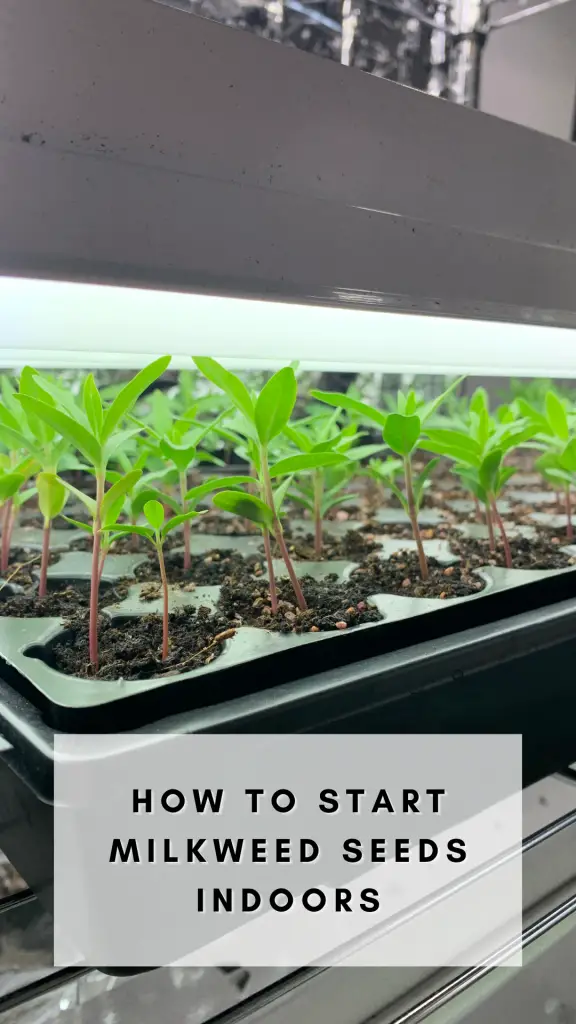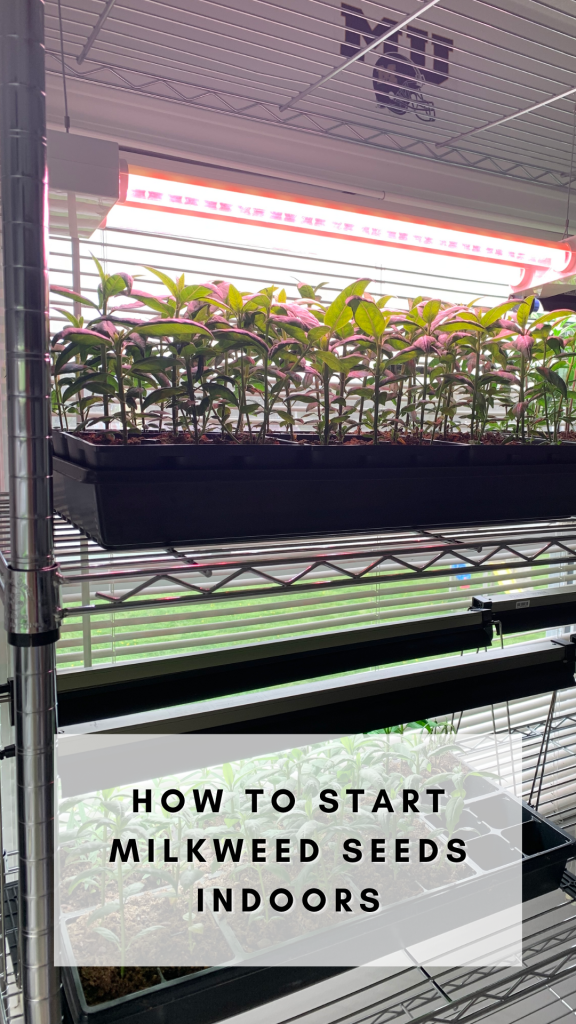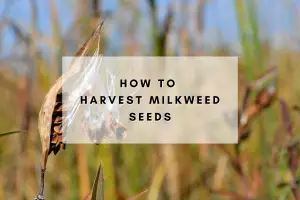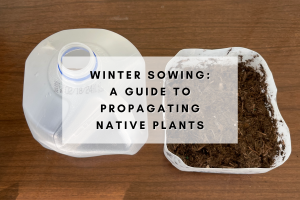Milkweed is not just another plant in the garden; it’s a lifeline for the iconic monarch butterfly and other pollinators.
As the primary food source for monarch caterpillars, milkweed plays a crucial role in supporting the delicate balance of ecosystems. However, due to various factors, such as habitat loss and pesticide use, milkweed populations have been declining, posing a significant threat to monarch butterflies.
But there’s hope – starting milkweed seeds inside can effectively contribute to monarch conservation efforts while adding interest to your garden.
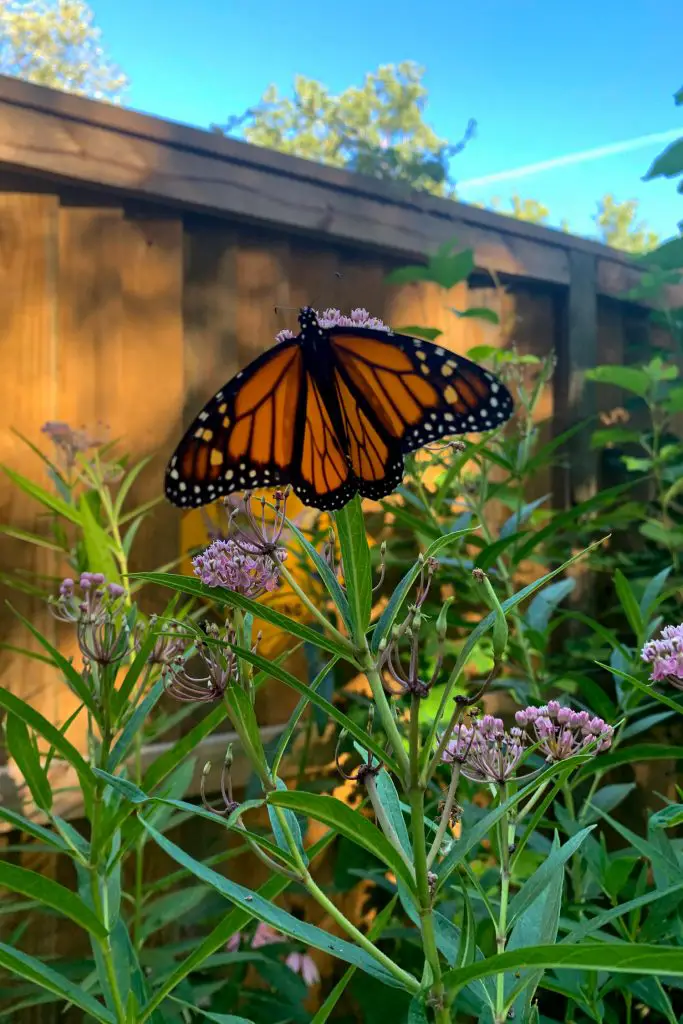
In this comprehensive guide, we’ll delve into the why and how of starting milkweed seeds indoors, empowering you to become a steward of these remarkable plants and the pollinators they support.
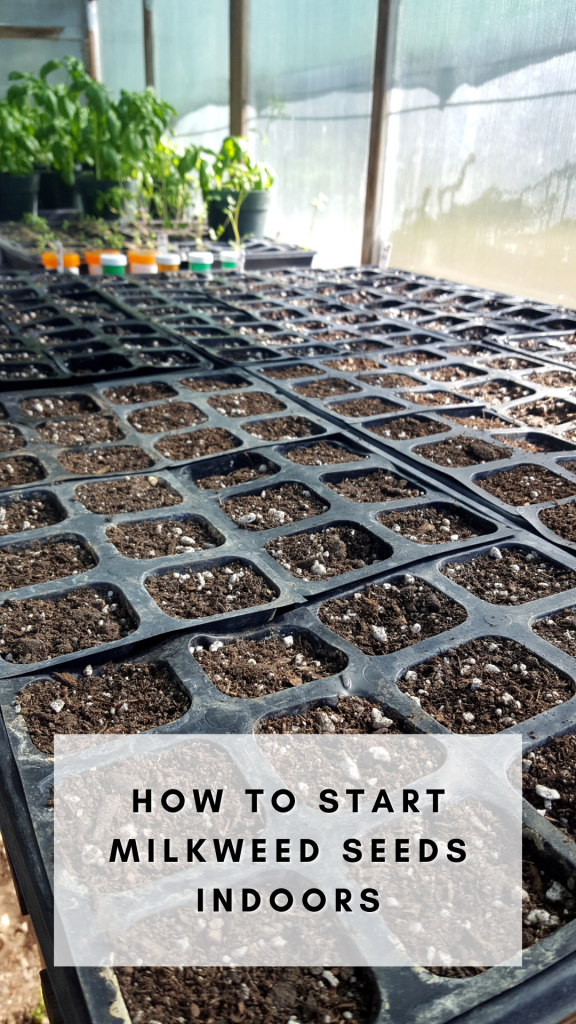
Why Start Milkweed Seeds Inside?
- Extended Growing Season: By starting milkweed seeds indoors, you gain control over environmental conditions, allowing you to extend the growing season. This is particularly beneficial in regions with short growing seasons or unpredictable weather patterns.
- Higher Germination Rates: Milkweed seeds can be finicky when it comes to germination. Starting them indoors provides optimal conditions for germination, resulting in higher success rates compared to direct sowing in the garden.
- Protection from Pests: Young milkweed seedlings are vulnerable to pests such as aphids and milkweed bugs. Growing them indoors initially helps shield them from these potential threats, giving them a better chance to establish strong roots before facing outdoor challenges.
- Customized Care: Indoors, you have greater control over factors like moisture levels, temperature, and light exposure, allowing you to tailor care to the specific needs of milkweed seeds and seedlings.
When to Start Milkweed Seeds Inside
Starting milkweed seeds inside is a fantastic way to support monarch butterflies while adding beauty to your garden.
However, timing is crucial for success. Choosing the best time to start milkweed seeds indoors ensures that you provide the best conditions for germination and growth.
Understanding the Growth Cycle of Milkweed:
Before delving into the timing of starting milkweed seeds indoors, it’s essential to understand the plant’s growth cycle. Milkweed is a perennial plant that follows a distinct pattern of growth:
1. Dormancy: In colder climates, milkweed plants go dormant during the winter months.
2. Germination: As temperatures warm in the spring, milkweed seeds germinate and grow.
3. Growth and Flowering: Milkweed plants develop foliage and flowers throughout the growing season, providing essential nectar for pollinators.
4. Seed Production: Towards the end of the growing season, milkweed plants produce seed pods filled with seeds. Harvest milkweed seeds in the fall, then plant them indoors over the winter to multiply your plants the following season!
5. Dormancy: The cycle repeats as the plants enter dormancy again in preparation for winter.
The best timing for starting milkweed seeds indoors:
1. Consider Your Climate:
The timing for starting milkweed seeds indoors varies depending on your climate zone. If you live in a region with short growing seasons or unpredictable weather, starting seeds indoors can give your milkweed plants a head start and ensure they have ample time to mature before the onset of winter.
2. Start 8-12 Weeks Before the Last Frost Date:
In most regions, the best time to start milkweed seeds indoors is in late winter/early spring, 8-12 weeks before the last frost date. This allows the seeds to germinate and develop into healthy seedlings before they’re ready for transplanting into the garden after the danger of frost has passed.
3. Consult a Seed Starting Calendar:
Consulting a seed starting calendar specific to your region can provide valuable guidance on when to start milkweed seeds indoors. These calendars typically indicate the ideal timing for starting various seeds based on local climate conditions and frost dates.
4. Adjust Based on Seedling Growth:
Keep an eye on the growth of your milkweed seedlings. If they’re growing too quickly or becoming leggy indoors, you may need to adjust your timing next year. Conversely, if they’re not growing as quickly as expected, you may consider starting seeds a bit earlier next season.
5. Monitor Outdoor Conditions:
As you approach your anticipated transplant date, pay attention to outdoor temperatures and weather patterns. If frost is still a risk, you may need to delay transplanting or provide temporary protection for your seedlings until the weather warms sufficiently.
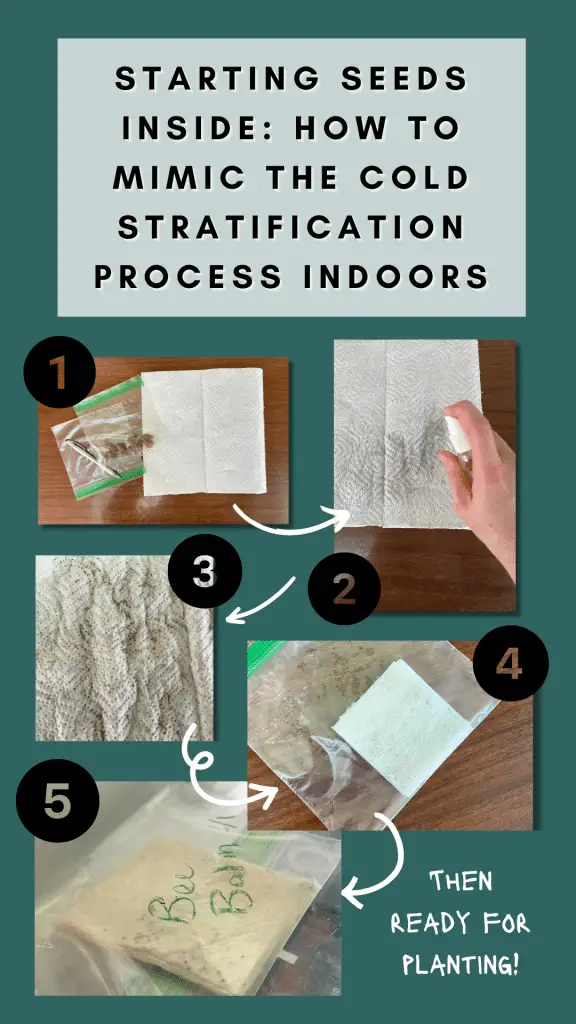
Mimicking Cold Stratification Indoors: Preparing Milkweed Seeds for Successful Germination
Cold moist stratification is a natural process that many seeds, including those of milkweed and other native plants, undergo to break dormancy and prepare for germination.
In the wild, milkweed seeds are exposed to cold temperatures and moisture over the winter months, which triggers biochemical changes within the seed coat, breaking dormancy and allowing for germination when conditions are favorable in the spring.
By mimicking this process indoors, gardeners can enhance milkweed seeds’ germination rate and success. Luckily the process is simple, you’ll just need to begin a few weeks before you plan to plant your milkweed seeds.
How to mimic cold stratification indoors:
Step 1: Gather Your Supplies
- Milkweed seeds
- Ziplock bags or airtight containers
- Damp paper towel or sphagnum moss
- Refrigerator
*These images actually show bee balm seeds being prepared for manual cold stratification, but the process is the same for milkweed.

Step 2: Prepare the Seeds
Start by moistening the paper towels or sphagnum moss until damp but not dripping wet. Spread them on a flat surface, such as a plate or tray.

Step 3: Seed Placement
Place the milkweed seeds evenly on the damp paper towels or sphagnum moss. Avoid overcrowding the seeds to ensure adequate air circulation.
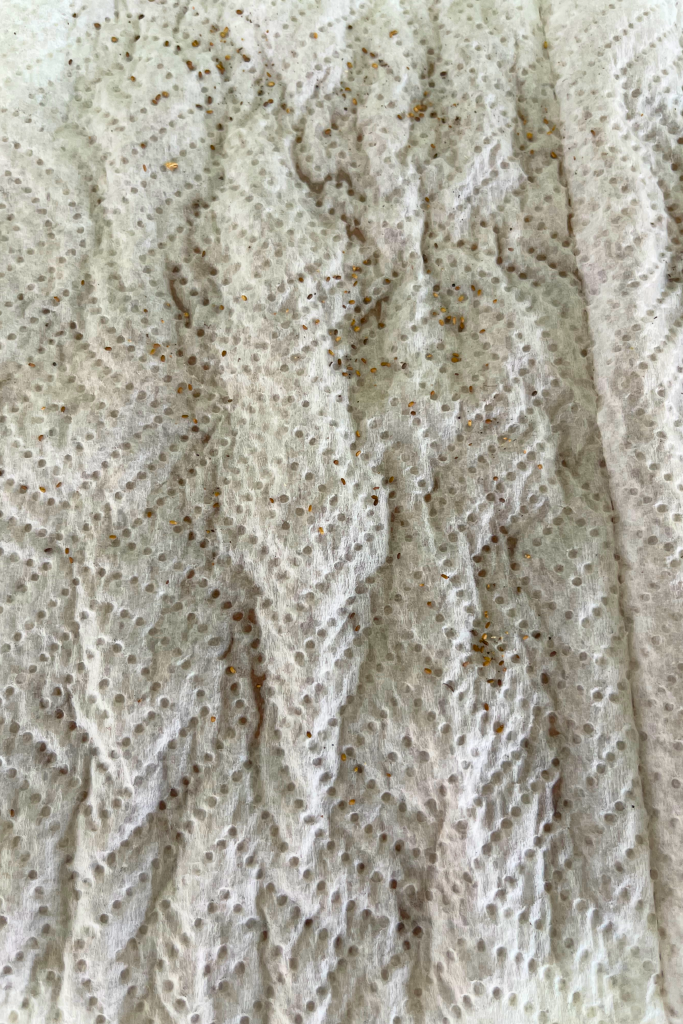
Step 4: Enclose Seeds in a Container
Carefully fold or roll up the moist paper towels or sphagnum moss with the seeds inside. Place them in a ziplock bag or airtight container, ensuring the seeds are well-contained and won’t spill out.
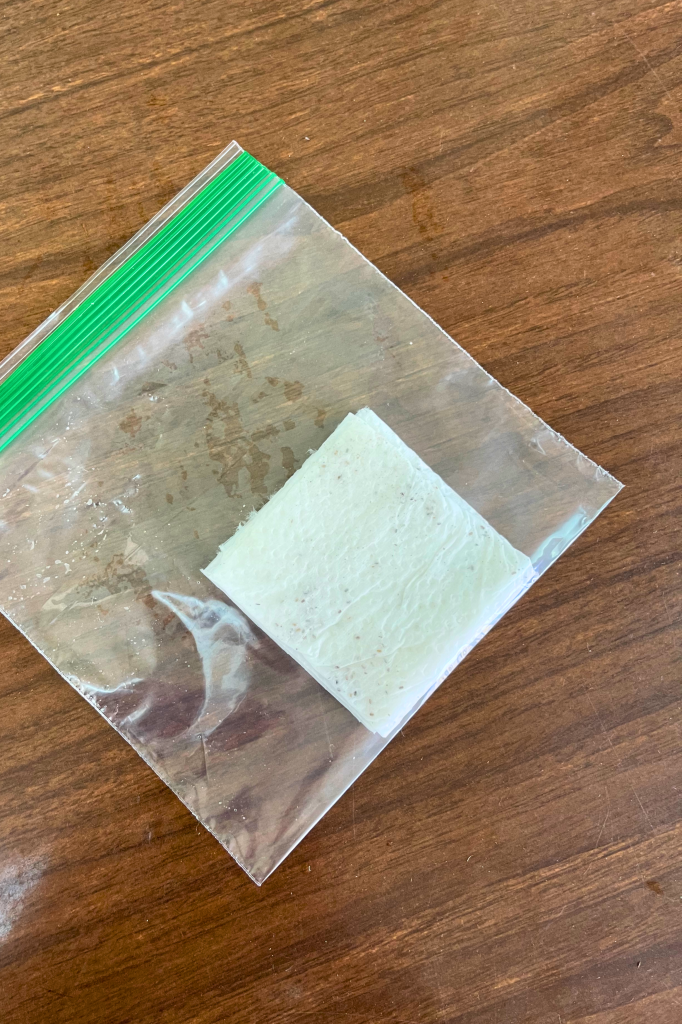
Step 5: Refrigerate
Label the container with the date and milkweed species and place it in the refrigerator to begin the cold treatment.
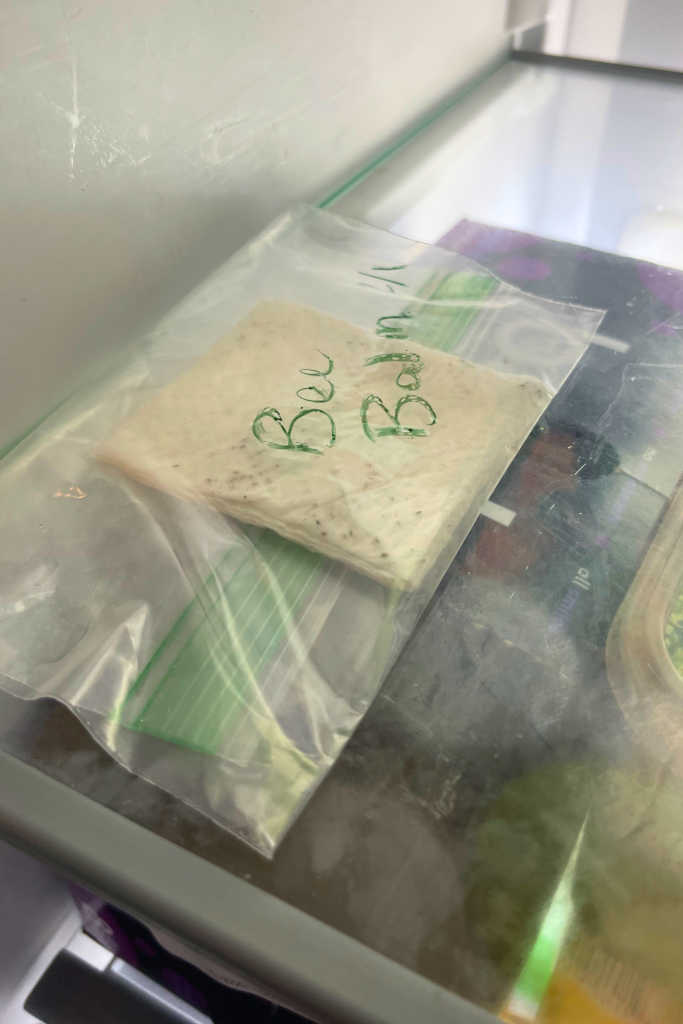
Milkweed seeds typically require a cold stratification period of 3-6 weeks, depending on the species. Check the seeds periodically to ensure they remain moist, adding water if necessary.
Step 6: Monitor Progress
After the designated cold stratification period, remove the seeds from the refrigerator and gently unwrap them from the paper towels or sphagnum moss. Your seeds are now ready to be planted.
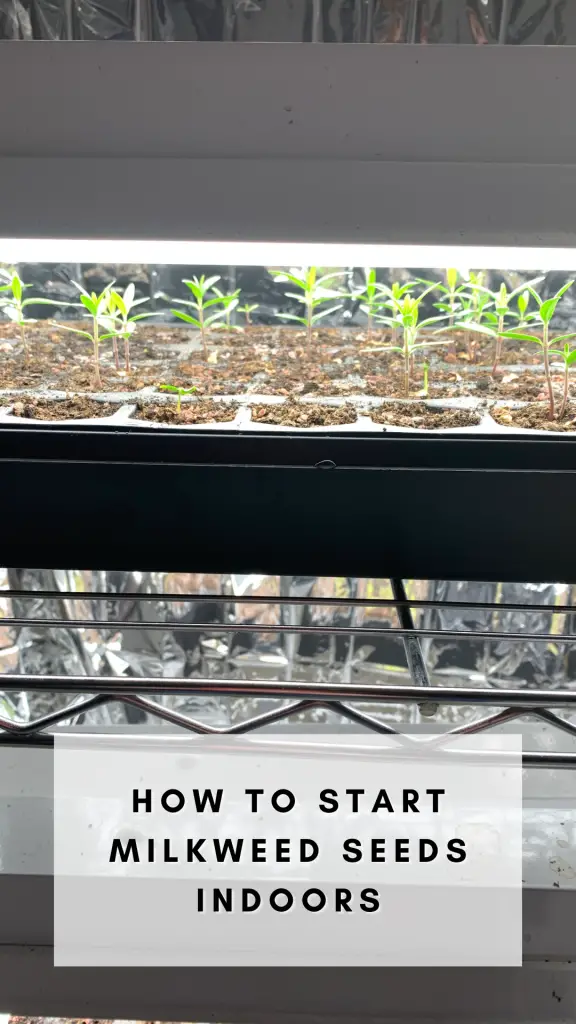
How to Start Milkweed Seeds Indoors
Step 1: Choose the Right Milkweed Species
Before you start, it’s essential to select the right native milkweed seeds for your region.
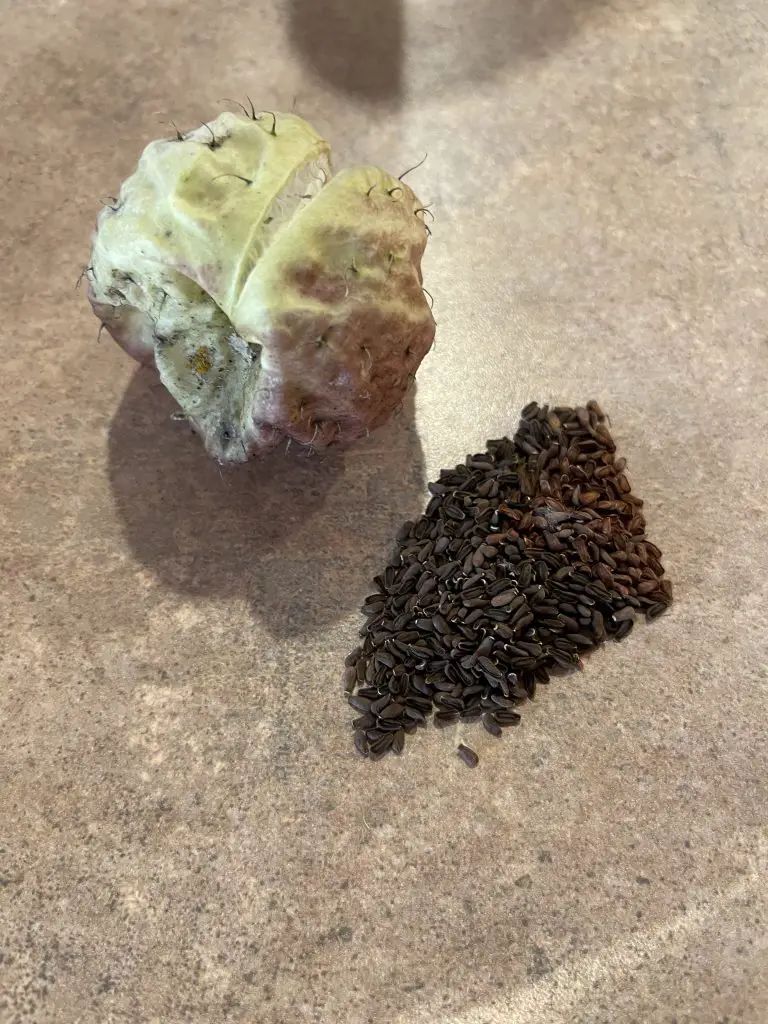
Common milkweed (Asclepias syriaca), butterfly weed (Asclepias tuberosa), and swamp milkweed (Asclepias incarnata) are popular choices, but there are many others to consider, like tropical milkweed and balloon milkweed (also known as hairy balls milkweed).
Research which species of milkweed are native to your area and best suited to your garden’s conditions.
Step 2: Gather Your Supplies
Gather the necessary supplies before you begin. You’ll need:
- Milkweed seeds
- Seedling trays or pots
- Seed starting mix
- Grow lights or a sunny window
- Shelf
- Watering can or spray bottle
- Labels for identifying seedlings
Here’s an example of an entire setup for growing milkweed and other native pollinator plants:

Step 3: Prepare the Seed Starting Mix
Fill your seed starting trays or pots with a high-quality seed starting soil mix. Avoid using garden soil, as it may contain pathogens or pests that can harm delicate seedlings. Moisten the mix thoroughly before sowing the seeds.
Step 4: Sow the Seeds
Carefully place seeds on the surface of the seed starting mix, spacing them evenly apart.
Press the seeds lightly into the moist soil, but avoid burying them too deeply, as milkweed seeds require light to germinate. If you’re using trays, you can sow multiple seeds per cell and thin them out later.
Step 5: Provide Adequate Light and Moisture
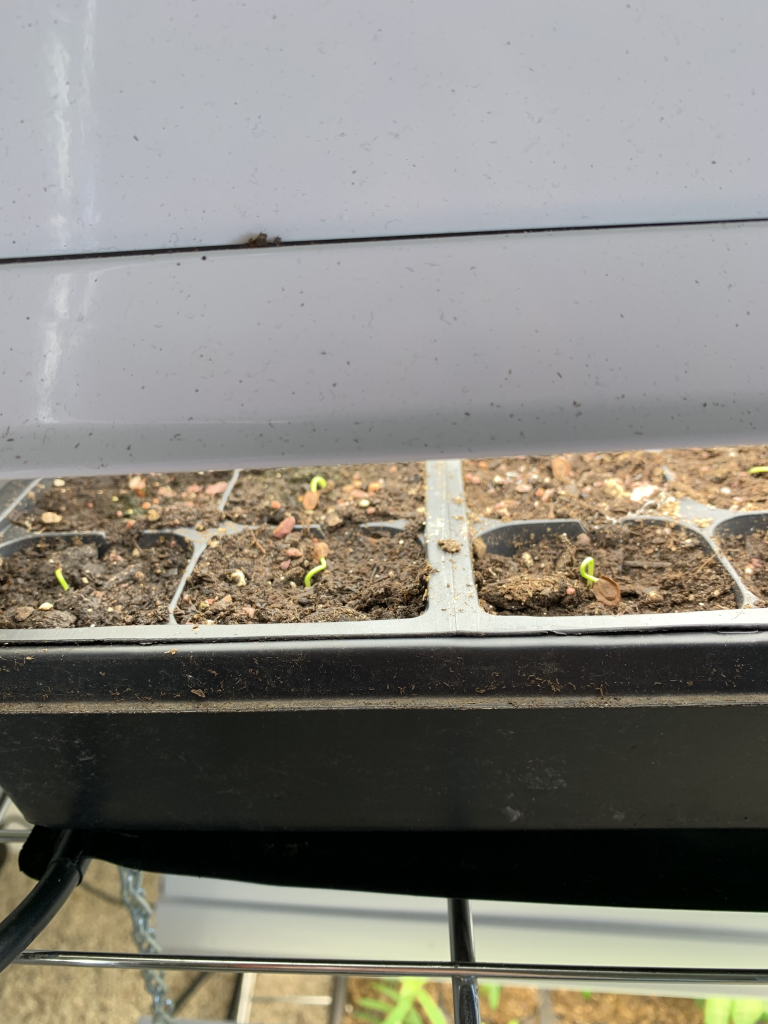
Place the seed trays in a warm, bright location with full sun.
If you’re using grow lights, position them a 1-2 inches above the seedlings and adjust the height as the plants grow.
Keep the soil consistently moist but not waterlogged, as overly wet conditions can cause the seeds to rot. A spray bottle can be handy for gently misting the soil surface.
Step 6: Transplanting Seedlings
Once the seedlings have developed several true leaves and are sturdy enough to handle, they can be transplanted into larger pots or directly into the garden.
Before planting, harden off the seedlings by gradually exposing them to outdoor conditions over the course of a week before transplanting to reduce transplant shock.

Just place the plastic flats outside in a shady spot where they can be exposed to wind and other natural elements during the day.
You can also use a fan on a low setting indoors to mimic wind once the plants are 2-3 inches tall. This will help strengthen the stems before they are moved outside permanently.
Step 7: Care for Established Plants
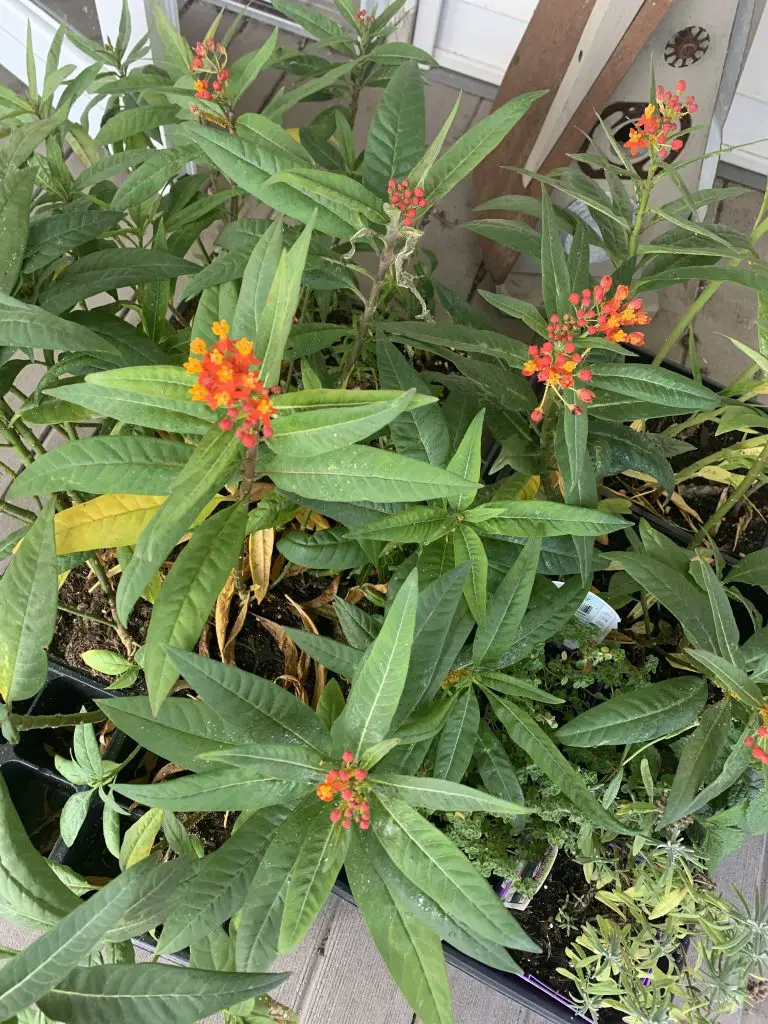
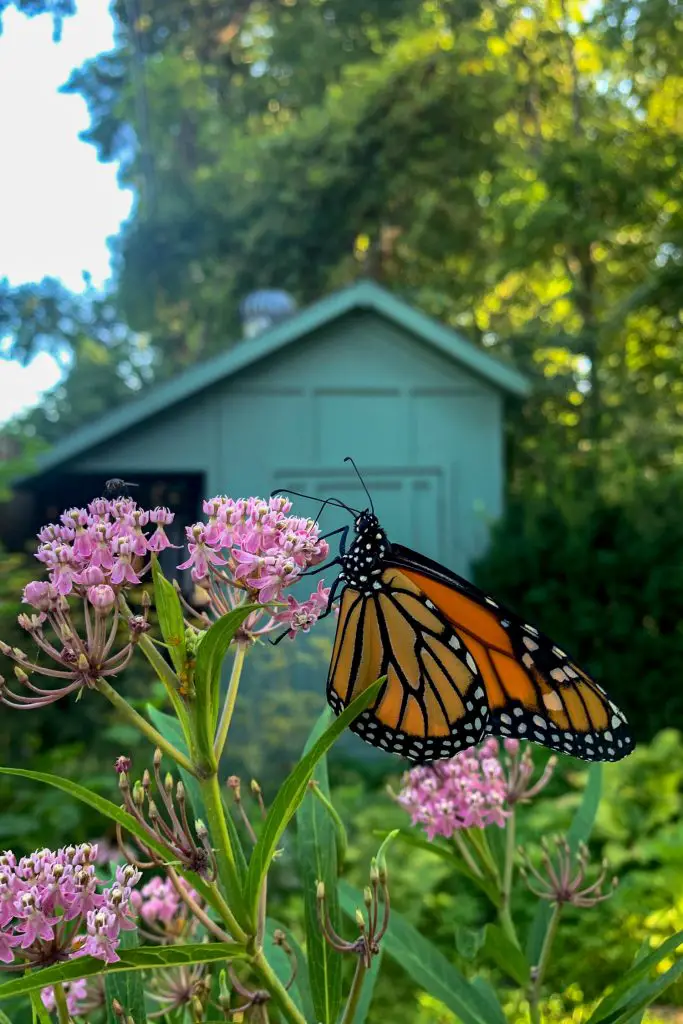
After transplanting, continue to monitor and care for your new plants.
Water them regularly, especially during dry periods, and mulch around the base of the plants to conserve moisture and suppress weeds.
Deadhead spent flowers to encourage continued blooming and remove any pests by hand or with a gentle spray of water.
Starting milkweed seeds indoors is a rewarding endeavor that not only benefits monarch butterflies but also adds beauty and biodiversity to your garden.
By following the steps outlined above, you can successfully cultivate milkweed plants from seed and create a thriving habitat for these magnificent creatures.
Whether you’re a seasoned gardener or a novice enthusiast, there’s no better time to start than now. Join the movement to protect monarch butterflies and their essential host plant by growing milkweed from seed indoors.
Save this post for later by pinning it to you pinterest board!
